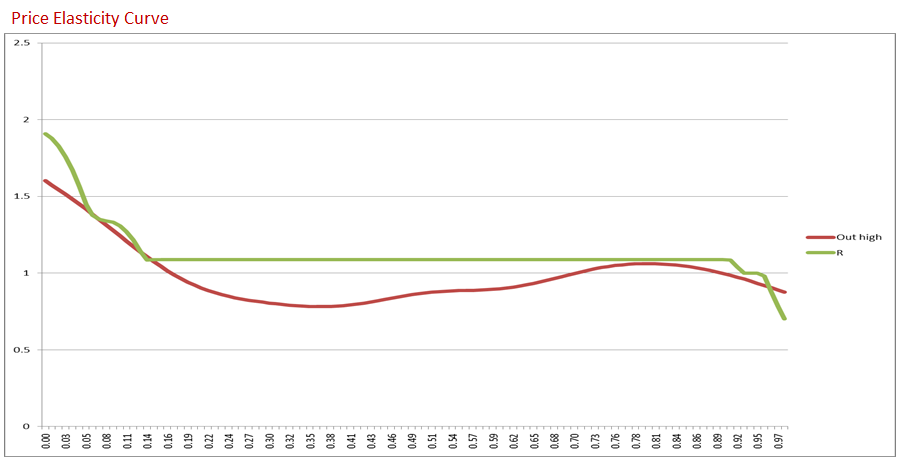Blog
Is perceived value = Price?
For highly differentiated product and services, how do customers perceive value? For doing customer centric pricing understanding the perceived value is critical. In this example from The Street for investment advice media company’s products when we created price elasticity models the price elasticity models for around 60%+ of the subscribers for subscription renewal were highly non-monotonic.
Below is a typical chart of the price elasticity for such subscribers. The x-axis is a non- linear monotonically increasing function of price. On the y-axis is the multiplier for the conversion rate at the reference renewal price (in the non-linear space at 1).
The conversion rate multiplier goes as low as 0.8 and then as price is increased increases to as high as 1.1, which is almost an increase in the conversion rate of 35% which is huge.
For such consumers it is clear the perceived value increases as we increase the price from 0.8 to 1.1 and then the price becomes too high to justify the value.
For such consumers it is important to get the right price to get them to renew as lower renewal price for the product is perceived as cheap product (advise not worth paying). The impact of price optimization in such groups is enormous.

